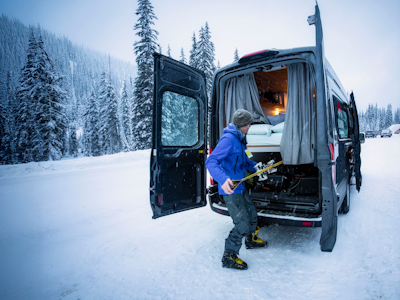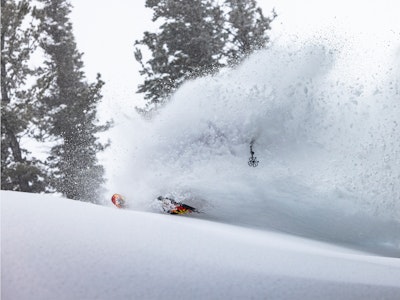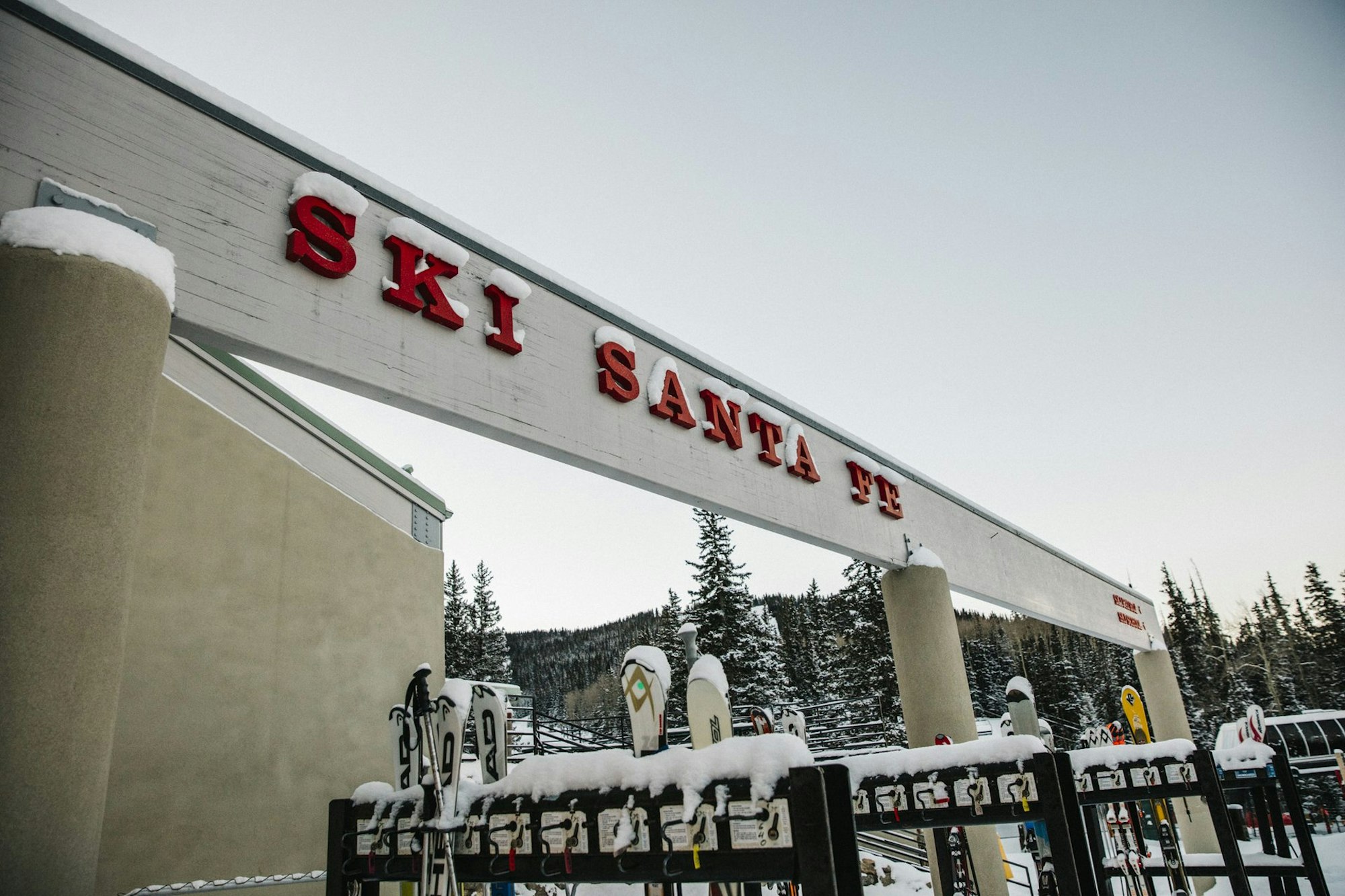Featured Image: Courtesy Ski Santa Fe
Benny Abruzzo is a badass. There’s no doubt about that. It runs in his blood.
He’s likely the only ski area executive in the world who has cut the runs on the slopes of his ski area with his own two hands, ensuring his guests can have the best possible skiing experience. It’s doubtful that any of today’s resort owners or managers participate in guiding, grooming, run cutting or infrastructure construction projects. They certainly don’t make them like Benny Abruzzo anymore.
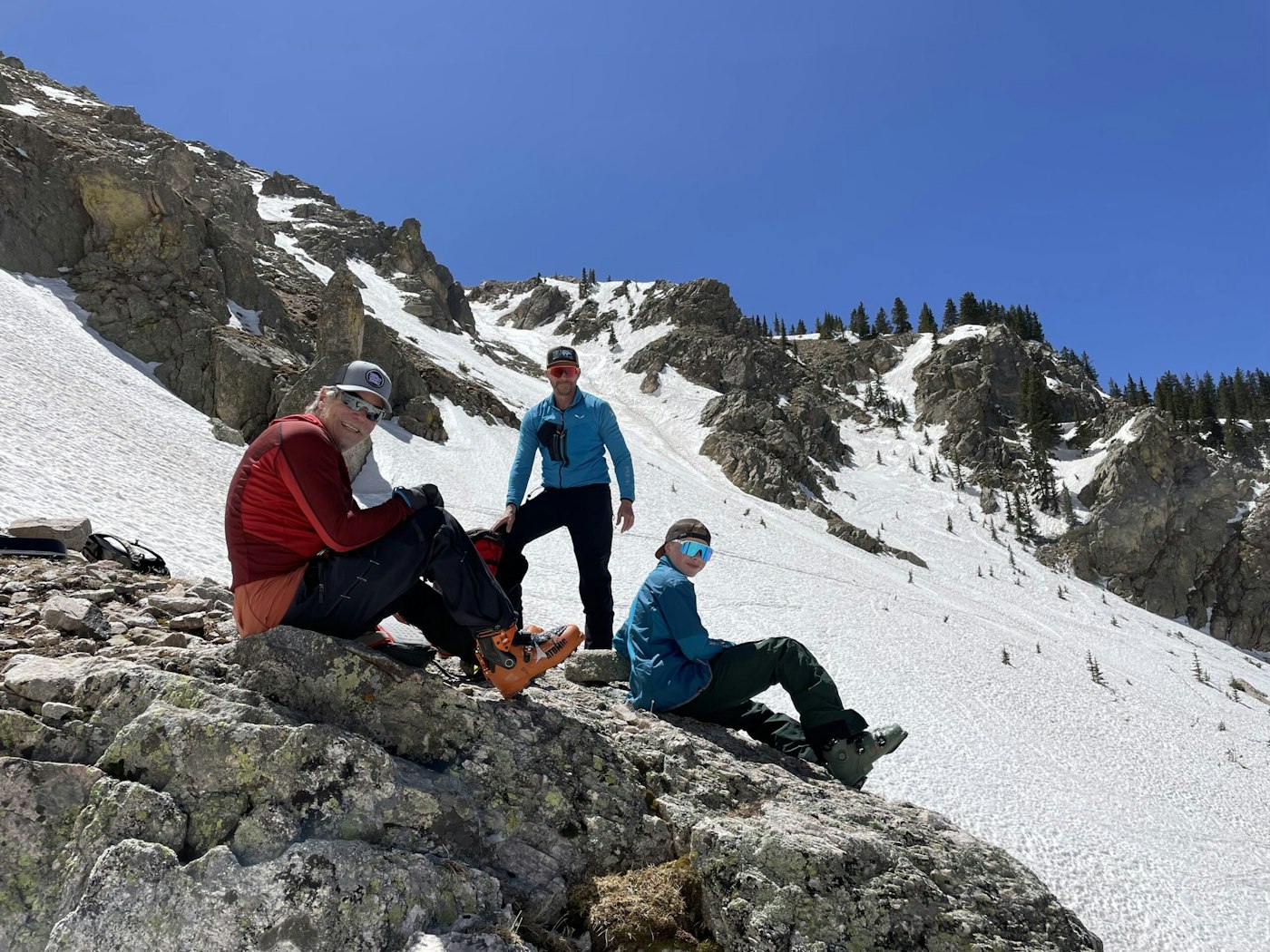
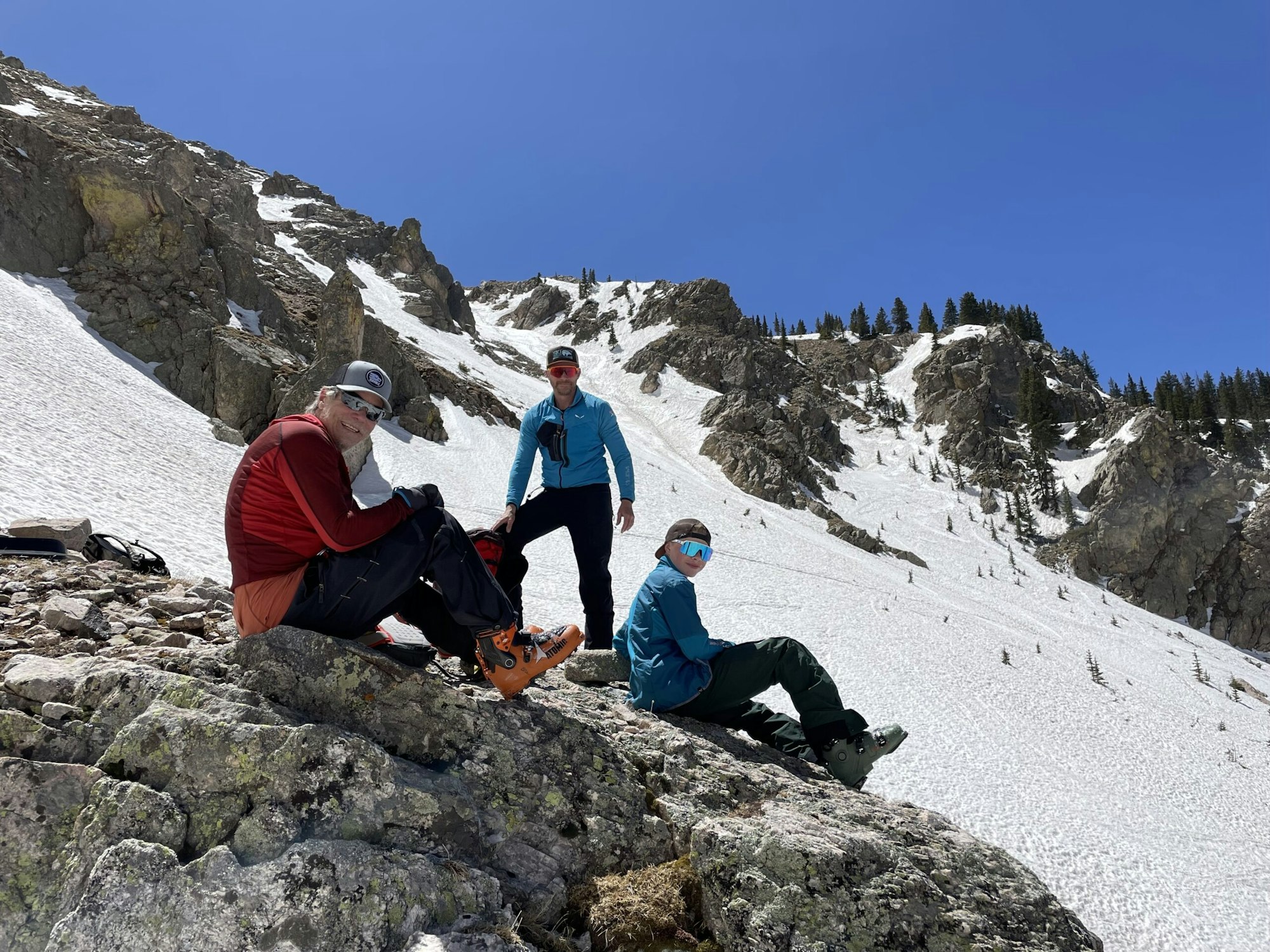
Three generations of Abruzzos at Ski Santa Fe.
Over the last 35 years, Benny has built five chairlifts, put in additional lift towers and a five-million-gallon water storage facility. Three seasons ago, Benny passed the title of CEO down to his second son, Ben, and it’s the most hands-off he’s been since his father, also named Ben, acquired Ski Santa Fe back in 1984. Ben Abruzzo Sr. was part of a team that piloted the first gas balloon across the Atlantic and Pacific Oceans, and the family holds a reverent spot in New Mexico ballooning.
In addition to running Ski Santa Fe, they also built and own Sandia Peak Ski Area and the Sandia Peak Aerial Tramway in Albuquerque, where the Abruzzos settled several generations ago. You’ll find the New Mexico Ski Museum at the base of the Sandia Peak Tram that helps tell the story: This is New Mexico ski royalty.
Their devotion to adventure ensures a liberal uphill policy at Ski Santa Fe. I meet Benny at mid-mountain underneath Tesuque Peak Lift, named in honor of the neighboring Tesuque Pueblo lands.
“The foundation is a passion for skiing,” he says as we climb the mountain. “We just love to ski. Driving excavators, driving snow cats, standing on the towers—it gives you a different perspective on how to do your job,” says Benny. “My father set that foundation. He was a hands-on man.”
Between easy breaths of fresh air, Benny says that because they ski these trees and glades of the peculiarly small 580-acre resort daily, they know best where to cut out trees in the summer to optimize the glades. Only a few C-level folks in the ski industry are out on the slopes every day. Ski Santa Fe defines the idea of a family-run business and remains an independent ski resort. They climb this exact skintrack weekly or more, and this is where they have their meetings, naturally.
As we started from the base, meeting outside Totemoff’s Bar (where they also share a little apartment on the second floor to avoid the hour drive home to Albuquerque on snowy nights and to be there for first chair on powder days), I was curious why everyone slowed down to offer a shout out, given our incognito uphill route.
“We have a management team that’s connected to the locals,” Benny says. “Every day when I’m out skiing, it’s impossible not to get a big shout-out from someone I’m sharing a run with. Locals come up and tell us we have the best grooming anywhere. And it builds this kind of excitement. What we’re doing is different,” he goes on to explain. “It starts with being hands-on. It puts a face on the mountain that’s a little different. You can see that by the fact that we’re still an independent mountain.”
As we quickly gain ground, Benny explains that Ski Santa Fe operates 100 percent on Forest Service land, under a special use permit, surrounded by barometric landscapes. On one side of the resort is the Santa Fe watershed, with tribal lands on the other, designated wilderness next to that, and the community of Santa Fe on the other. “That makes us a pretty important neighbor,” says Benny.
We get to the highest ridge of the ski area after about 1,700 feet of climbing, overlooking a giant, glistening, sweet powder-filled bowl looming just spitting distance over the lip of the ridge. Having just skinned up at a conversational pace, only a few brief words are exchanged about why we don’t ski in that zone: It’s sacred.
The entire region is brimming with spiritual energy, and anyone who’s been to the Santa Fe area knows it’s like stepping into a time warp. But this place is not being left behind when it comes to skiing, ski resorts and ski culture.
“Our goal is to create an environment on the mountain that’s fun, that’s rewarding, that’s quality, and that extends to the whole staff,” he says. “It takes an incredible amount of effort to build a team of individuals striving for the same goals and vision. We’re a family-run, family service-oriented mountain that aims to make you feel comfortable.”
So, what goes into conscientiously managing such a unique ski area adjacent to tribal lands? “Everything that we propose to do, the Forest Service communicates to the tribes. We meet with them each year with an open discussion about what we’re doing and our plans,” Benny explains. “We hold the meetings at the ski area, ride the chair lifts, walk around, review wastewater treatment.”
“We run a very open organization. If we felt we were doing something that had a negative impact, we wouldn’t want to do it. There’s no gain in that,” Benny says. Critical to their continued success, Ski Santa Fe is also committed to modernized, sustainable snowmaking. Benny firmly believes that it’s not only good for business but also for the environment. “Snowmaking puts water back in the creek; evaporation is very limited,” he says. “We aren’t changing the aquifer in the winter months. Making snow is adding to the aquifer of a region. It’s actually a wonderful benefit.”
Ski Santa Fe might have an intimate feel (limited mainly through parking at 3,600 skiers and snowboarders per day, but with many more days seeing closer to hundreds, not thousands). Still, there’s a shocking amount of challenging skiing sprawled across the small bowl, and we hit a perfect spring day sprinkled with fresh overnight snow. Back at mid-mountain, the scene at Totemoff’s is picking up, and someone orders me a “Trollie,” the patrol special: green chile stew in a cup with a steamed tamale. It’s a small sample of the incredible New Mexican cuisine. Not only is New Mexico the only state with an official question (Red or Green?), they grow more green chiles than any other state, and green chiles pack more Vitamin C than oranges, so indulge.
A stone’s throw from America’s second-oldest city, Ski Santa Fe epitomizes a family-run resort’s undefinable magic. The staff boasts an average tenure of 15-20 years, and many locals are decades-long pass holders. The hard work and badassery of the Abruzzos is evident everywhere you look, across sacred lands and up into the heavens.
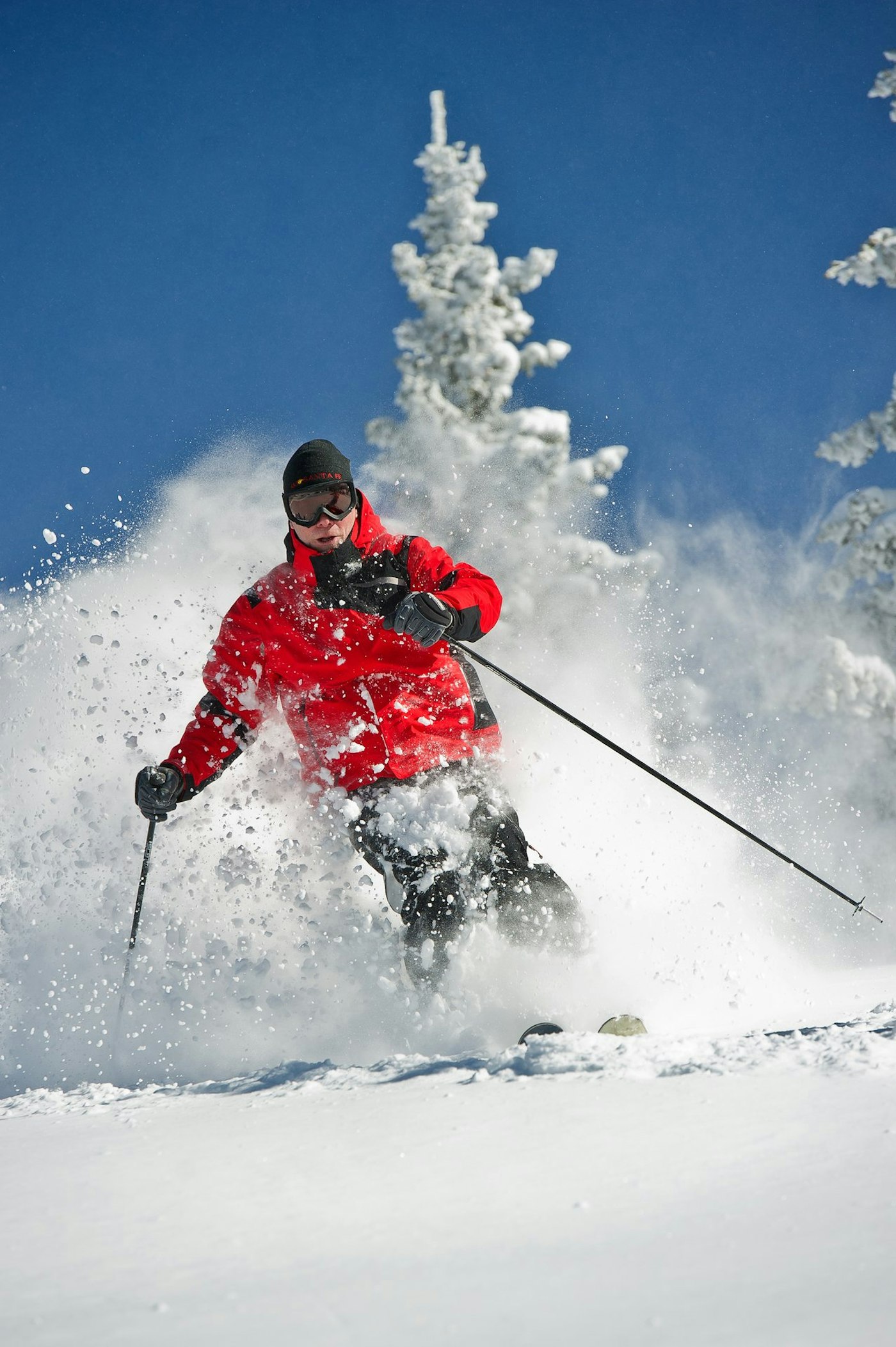
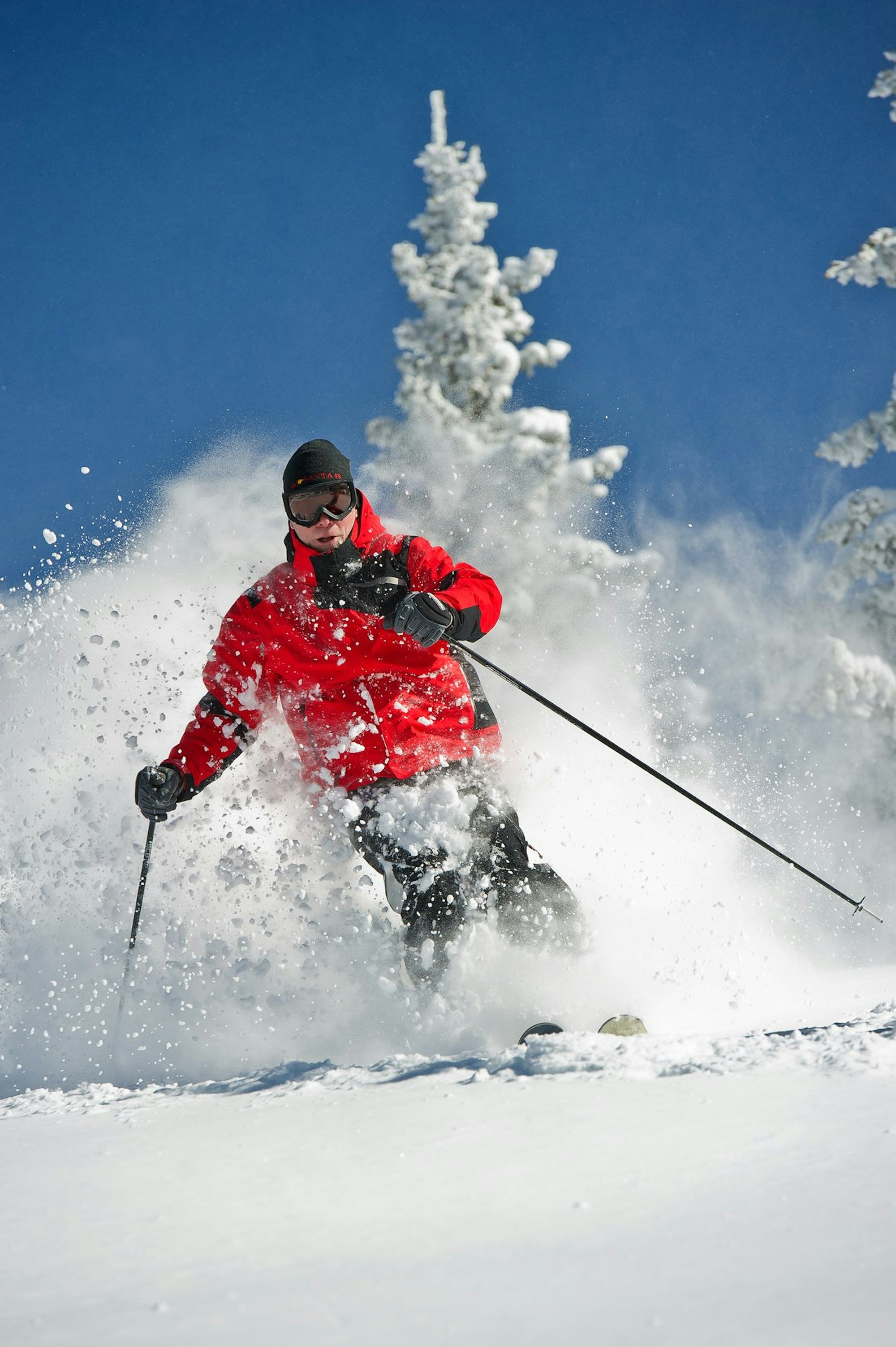
PHOTO: Courtesy Ski Santa Fe
Know When You Go
SKI
Skiing in New Mexico is an essential checkmark for any ski bums’ resume. While Taos gets most of the media love due to its famed steeps and slightly more predictable snowpack, Ski Santa Fe, Pajarito, Sipapu, Sandia Peak, Red River and Angel Fire are not to be overlooked.
STAY
Archbishop Jean Baptiste Lamy constructed the original Bishop’s Lodge more than 150 years ago as a private spiritual retreat near the Tesuque Creek just north of Santa Fe. The Pulitzer family constructed what is now known as the main lodge, and by 1918 it was attracting a burgeoning motor-lodge customers. Several major renovations included restoration of the historic chapel as well as new amenities including a trout habitat, Healing Arts Center, conference and event facilities, outdoor gardens, stables, new restaurant concepts, residences and a unique 12-bedroom Bunk House. Recent restorations by Auberge Resorts were inspired by the region’s Navajo and Hopi Native American tribes, where adobe structures and organic architecture lend a spiritual authenticity and a five-star experience with a laid-back southwestern flare. True to Santa Fe style, you’ll find galleries and outdoor activities, New Mexican cuisine, dramatic views and a restorative vibe.
REJUVENATE
Inspired by Japan’s mountain hot springs called onsens, Ten Thousand Waves sits on a 20-acre hillside perfectly situated between Santa Fe and the ski area, and I highly recommend a visit. Their Japanese-adobe aesthetic is one of a kind, allowing you to heal and energize after a day on the mountain. Soak in unique private hot tub suites, sit silently in the meditation room or tap into the spa services and izakaya-style Japanese dining at the on-site restaurant.

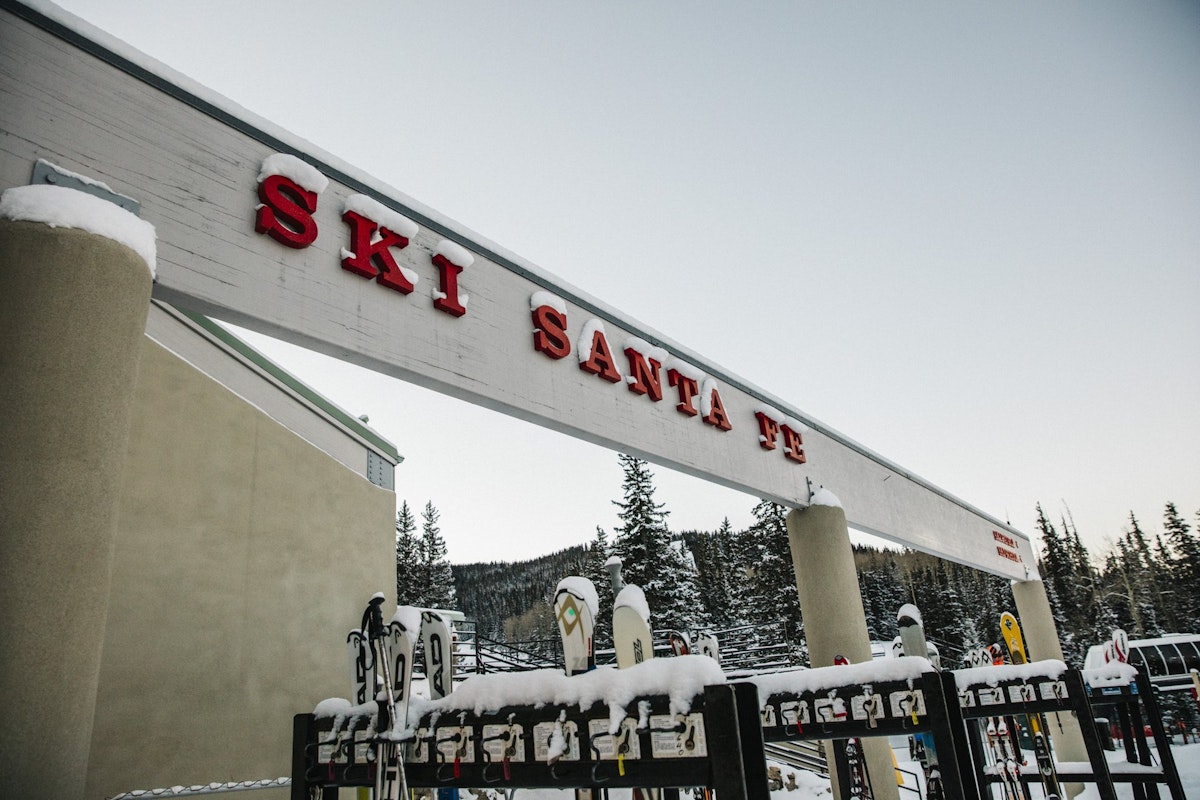


![[GIVEAWAY] Win a 4-Night Karma Campervan Rental and go Ski the Powder Highway](https://www.datocms-assets.com/163516/1767816935-copy-of-dji_0608-1.jpg?w=200&h=200&fit=crop)

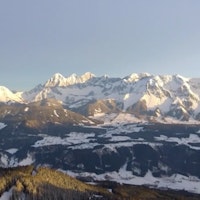
![[GIVEAWAY] Win a Legendary Ski Trip with Icelantic's Road to the Rocks](https://www.datocms-assets.com/163516/1765233064-r2r26_freeskier_leaderboard1.jpg?auto=format&w=400&h=300&fit=crop&crop=faces,entropy)
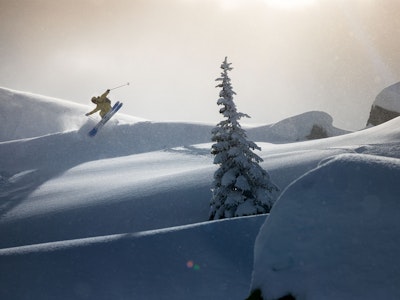


![[GIVEAWAY] Win a 4-Night Karma Campervan Rental and go Ski the Powder Highway](https://www.datocms-assets.com/163516/1767816935-copy-of-dji_0608-1.jpg?auto=format&w=400&h=300&fit=crop&crop=faces,entropy)

